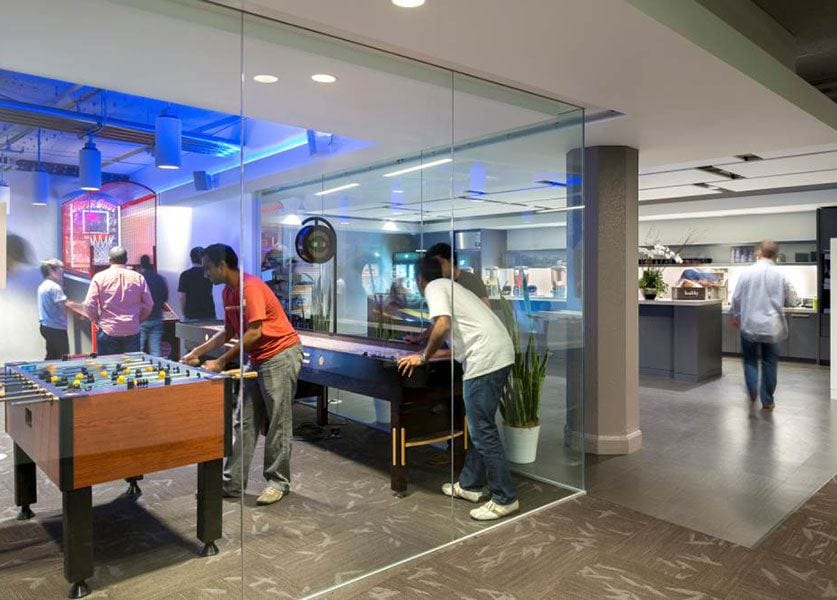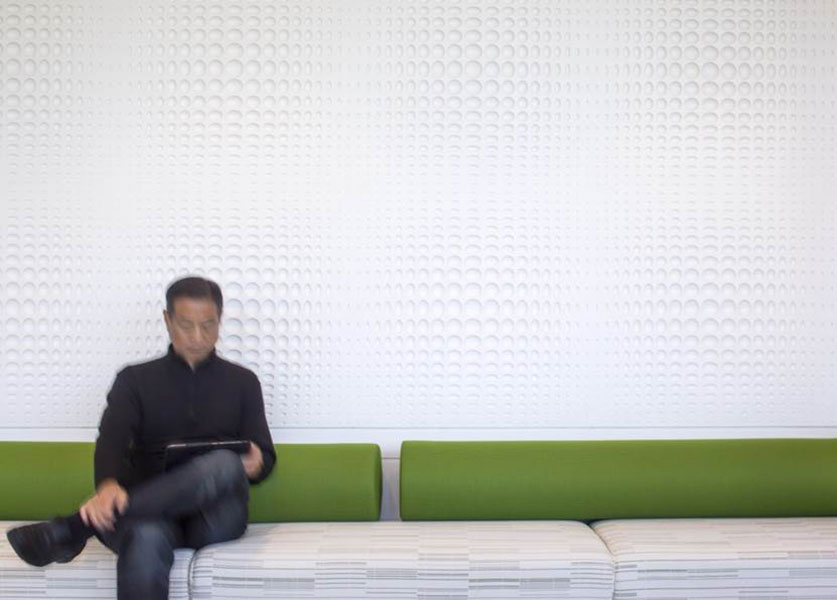

The ability for designers to demonstrate how workplace design will improve productivity has been the holy grail of the design and facilities management profession for decades. Clients seek demonstrable proof that the cost of a new workplace, and how it is designed, will increase productivity within their workforce, especially in a business environment where minimizing costs is essential. Additionally, we live in a world that is increasingly influenced by data which plays pivotal roles in most business decisions. It is only logical that at some level, designers are able to demonstrate the value of how the workplace is designed.
To a large extent, this problem has been brought about by the design profession itself when the industry at large claimed that a “well designed workplace” can help make clients more productive. At the turn of the century, working in the open and eliminating physical barriers, such as partitions, was prescribed to make you more collaborative. Along came Susan Cain with her book on introverts and now clients are advised to allocate more space for focused work. These contradictory messages have only added to the confusion and beg the question: Just how can a well-designed workplace make an organization more productive?
The design and facilities management profession has, to a large extent, trapped itself in an attempt to demonstrate the value of the design of the workplace. Productivity is an elusive metric when dealing with knowledge workers: It has been illustrated via savings in travel, decreases in email traffic, proximity to rest rooms, or employee satisfaction surveys. All these factors contribute to a lack of viable discourse as to the true value of workplace design to the enterprise.

Adding to this conundrum is confusion around what to measure, how to measure it, and who is responsible for enabling the organization to be more productive. It is this last point where the industry has failed to understand both the potential and the limitations of workplace design. We have assumed the responsibility that the design of the workplace will create productivity rather than seeing the metric as a shared responsibility of both the design consultant and the client. How can we expect the physical space alone to enable productivity if the organization’s internal barriers inhibit productivity?
We have also unintentionally linked the role of productivity with decreasing the real estate footprint. The notion that new ways of working will both assist the organization and make the employees of that organization more productive, while at the same time result in a reduced real estate foot print, is a rather naïve organizational objective. The two are not always congruent and are sometimes at odds with each other. Productivity by itself within non-manufacturing/production organizations is a goal that cannot be measured against workplace design initiatives. Furthermore, the design and facilities management profession needs to move beyond this discussion and address the true potential where workplace design can have an impact: Organizational performance.

Adding to this conundrum is confusion around what to measure, how to measure it, and who is responsible for enabling the organization to be more productive. It is this last point where the industry has failed to understand both the potential and the limitations of workplace design. We have assumed the responsibility that the design of the workplace will create productivity rather than seeing the metric as a shared responsibility of both the design consultant and the client. How can we expect the physical space alone to enable productivity if the organization’s internal barriers inhibit productivity?
We have also unintentionally linked the role of productivity with decreasing the real estate footprint. The notion that new ways of working will both assist the organization and make the employees of that organization more productive, while at the same time result in a reduced real estate foot print, is a rather naïve organizational objective. The two are not always congruent and are sometimes at odds with each other. Productivity by itself within non-manufacturing/production organizations is a goal that cannot be measured against workplace design initiatives. Furthermore, the design and facilities management profession needs to move beyond this discussion and address the true potential where workplace design can have an impact: Organizational performance.
IA is a global firm of architects, designers, strategists, and specialists. We focus exclusively on environments through the lens of interior architecture—a radical idea in 1984, when IA was founded. We are highly connected agents of change, committed to creativity, innovation, growth, and community.
IA is a global firm of architects, designers, strategists, and specialists. We focus exclusively on environments through the lens of interior architecture—a radical idea in 1984, when IA was founded. We are highly connected agents of change, committed to creativity, innovation, growth, and community.


